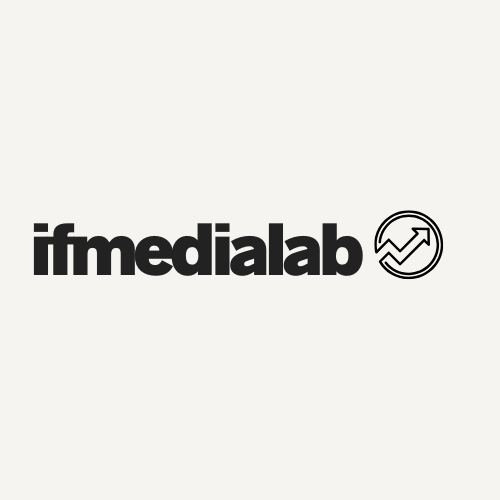What Exactly Is Digital Marketing?
- iFMediaLab

- 5 days ago
- 4 min read

Digital marketing is simply the use of digital tools, technologies, and data to reach customers, promote your business, and measure your success.
Instead of relying solely on traditional methods like print ads or billboards, digital marketing uses internet-connected devices to deliver specific, measurable messages across every stage of the customer journey.
Core Components: Where You Reach Customers
Digital marketing succeeds by meeting your audience where they already are: online.
This is done through a variety of specialized channels:
Search Engine Optimization (SEO) and Paid Search (SEM): This is all about getting found on Google. SEO helps your site rank naturally (organically), while Paid Search lets you run targeted ads that appear immediately when people search for relevant keywords.
Social Media: This includes posting content, running targeted ads, managing your community, and partnering with influencers on platforms like Instagram, LinkedIn, and TikTok.
Email and SMS Marketing: Sending personalized, permission-based messages directly to a customer's inbox or phone for sales, updates, and relationship building.
Content Marketing: Creating valuable resources like articles, videos, podcasts, and whitepapers that attract people to your brand and help them solve a problem.
Display and Programmatic Ads: These are the banner and video ads you see across various websites and apps, often bought and optimized automatically in real-time.
Mobile and App Marketing: Specific tactics like app store optimization (ASO), push notifications, and in-app messaging designed to engage users on their mobile devices.
Affiliate and Partner Marketing: Paying other partners or networks a commission for driving sales or leads to your business.
Key Capabilities: How Digital Marketing Works
The power of digital marketing lies in its ability to be precise, automated, and measurable—something traditional marketing struggled with.
Precise Targeting: You can use data (like demographics, behavior, and intent) to segment your audience and ensure your message only reaches the people most likely to buy.
Measurement and Analytics: Everything is tracked! You can instantly see important metrics like site traffic, leads generated, conversion rates, and the true cost of acquiring a customer (CAC), allowing for rapid adjustment.
Conversion Rate Optimization (CRO): This involves constantly testing and refining your website and landing pages (e.g., A/B testing) to ensure more visitors take the desired action, like signing up or making a purchase.
Marketing Automation: Using technology to automate repetitive tasks like sending triggered emails, scoring leads, and delivering personalized content at scale.
Privacy and Compliance: Ensuring all data collection and advertising practices adhere to current laws and platform policies (like GDPR or CCPA) to build and maintain user trust.
Digital Marketing in Action: Real-World Examples
To see how these components work together, here are examples based on common business objectives:
- Driving E-commerce Sales (The D2C Brand)
Scenario: A clothing brand needs to turn window-shoppers into buyers.
Tactic: After a customer visits the site but doesn't buy, the brand uses Email/SMS Marketing to send an automatic message offering a limited-time 10% discount. Simultaneously, they use Dynamic Display Ads (Remarketing) to show the customer the exact item they looked at while browsing other sites.
Result: A significant percentage of abandoned shopping carts are recovered, directly increasing revenue.
-Generating High-Value Leads (The B2B Software Company)
Scenario: A company selling expensive HR software needs to find qualified corporate buyers.
Tactic: They create a detailed "Whitepaper" on new hiring laws (Content Marketing). They promote this guide using highly specific targeting on LinkedIn Ads (Paid Social) aimed only at HR Directors and CEOs. To download the paper, users must submit their contact information.
Result: The company acquires high-quality contact information (leads) that are ready to be followed up by the sales team.
-Capturing Immediate Local Demand (The Plumbing Service)
Scenario: A local plumbing service needs customers who are experiencing an immediate emergency.
Tactic: They invest heavily in Paid Search (Google Local Service Ads) to appear at the absolute top of results when someone searches for "emergency plumber near me" on their phone. They also ensure their SEO is strong for local, high-intent phrases.
Result: They capture time-sensitive traffic that is ready to call immediately, leading to high-value service appointments.
-Building Customer Loyalty (The Local Café)
Scenario: A café wants to increase repeat visits from existing customers.
Tactic: They use Email Marketing and App/Mobile Notifications to automatically send a personalized message on the customer's birthday offering a free treat. They also email customers who haven't visited in 60 days with a "We Miss You" coupon.
Result: Increased customer engagement, higher repeat purchase rates, and boosted Customer Lifetime Value (LTV).
Digital vs. Traditional Marketing: The Big Difference
Digital marketing is fundamentally better suited for today's rapid business environment:
Real-time Results: You get data instantly, allowing you to tweak an underperforming ad campaign in hours, not weeks.
Budget Control: You can start with a smaller budget and scale quickly, making it accessible to businesses of all sizes.
Deep Personalization: You can send slightly different ads or messages to different audience segments, making the communication far more relevant.
Final Takeaway: Be Data-Driven
In summary, digital marketing is an integrated, data-driven discipline that uses every available online tool to acquire, engage, and retain customers with outcomes that are clearly measurable. Success requires defining clear goals, tracking diligently, and being willing to test and iterate constantly.

Comments